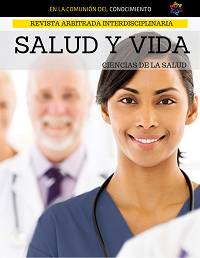Technological Waste Management: Flourishing Business
DOI:
https://doi.org/10.35381/s.v.v4i7.666Keywords:
Technological waste, manual, recycling, healthy environment.Abstract
The issue of technological garbage has been a problem for cities that have not understood the premise that matter is not destroyed, but transformed. Therefore, this article aims to evaluate the proposal of a manual for the management of technological waste as a flourishing business in the canton of Jipijapa – Ecuador, with the aim of converting the volume of technological waste deposited in litter semployment in an economic income medium for the community, through its recovery and useful transformation, by bringing it back to the productive circuit, serving as a visitable and educational research center, on recycling, waste treatment and management. Methodologically, observation and study was used to a statewide range of action in the Canton of Jipijapa that included 80 inhabitants and responded to an instrument of dycotamic responses. The results obtained made it possible to know the readiness of those investigated regarding the knowledge and necessity of Technological Recycling, which led to the conclusion that there is a willingness to accept the proposal for a manual for the management of waste technological products as a thriving business for the canton of Jipijapa – Ecuador, admitting to minimizing environmental damage, encouraging the contribution of recycling and re-enacting technological waste, forming awareness that will spread knowledge on the subject to improve environmental quality and by extension human quality.
Downloads
References
ASTRE (2014). Agencia para Sustancias Tóxicas y el Registro de Enfermedades. Recuperado en: www.atsdr.cdc.gov
Cervantes, G. y Xercavins J. (2005). Desarrollo Sostenible. Ed. UPC.75-78pg.
Chiappe, L. (2000). Modulo Estudios de Impacto Ambiental. Publicaciones UNICOR. Montería. 4 pg.
De la Parra, D. (2007). Disponible en: http://www.daviddelaparra.com/2007/11/10/simo-2007-y-alrededores/
González, F (2006). Ambiente y Desarrollo. En busca de caminos para la comprensión de la problemática ambiental. IDEADE. JAVEGRAF. Bogotá.32, 33 pg.
Hernández, Fernández y Baptista (2014). Metodología de la Investigación. Tercera Edición. México .Editorial Me Graw Hill.
IDEADE. Revista Ambiente y Desarrollo Nª 11.Javegraf. Bogotá. 149 pg.
Jaramillo, J (2003). Centro Panamericano de Ingeniería Sanitaria y Ciencias del Ambiente; Efectos de la inadecuada gestión de Residuos sólidos; Universidad de Antioquía, Medellín.
Monteiro, J., Mansur, G., y Segala, K. (2006). Manual de Gestión Integrada de Residuos Sólidos Municipales en ciudades de América Latina y el Caribe. Rio de Janeiro: IBAM.
ONU (2018). Organización de las Naciones Unidas, Disponible en: https://news.un.org/es/
Opazo, M (2002). La Gestión Ambiental una nueva Forma de Actuar.
OPS/OMS. (2002). Análisis sectorial de los residuos sólidos: Ecuador. Washington, D.C: OPS.
Perspectiva del Medio Ambiente. Geo Esmeralda (2006). Ambiente Urbano. Recuperado en: https://searchworks.stanford.edu/view/8657843
Pineda, S. (2008). Manejo y Disposición de los residuos Sólidos. Segunda Edición LIME. Bogotá.
Symae, N. (2008). Estudio de impacto ambiental para la construcción e implementación del relleno sanitario del cantón Esmeraldas en el actual botadero de Basura "El Jardín".
Tchobanoglous, G., & Theisen, H. (1998). Gestión Integral de Residuos Sólidos. México: McGraw Hill.
Published
How to Cite
Issue
Section
License
CC BY-NC-SA : Esta licencia permite a los reutilizadores distribuir, remezclar, adaptar y construir sobre el material en cualquier medio o formato solo con fines no comerciales, y solo siempre y cuando se dé la atribución al creador. Si remezcla, adapta o construye sobre el material, debe licenciar el material modificado bajo términos idénticos.
OAI-PMH: https://fundacionkoinonia.com.ve/ojs/index.php/saludyvida/oai.









